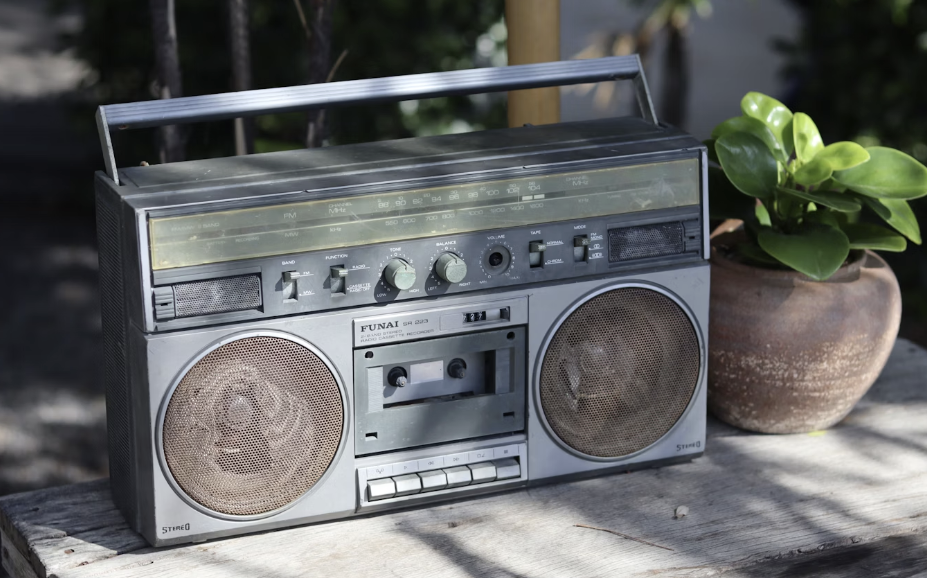Why Radio Remains a Daily Companion in the Age of Streaming

Despite the rise of streaming services and endless on-demand options, radio continues to hold a steady place in the routines of many listeners across the UK.
The familiarity of turning on a station, hearing a trusted voice, and knowing the next song or discussion will follow a predictable rhythm has a comfort that algorithms often cannot replicate. For many, tuning in has become as automatic as making a morning coffee or checking the news, a quiet ritual that punctuates the day and offers a sense of continuity.
Entertainment habits have changed rapidly in recent years. On-demand platforms, streaming services, and social media offer endless choice, with notifications, autoplay, and personalised feeds encouraging constant engagement and fleeting attention. Despite these distractions, many listeners still turn to radio, a medium that provides not just sound but a familiar rhythm, a sense of continuity, and a steady presence woven into daily routines, marking moments of the day and offering quiet, comforting companionship amidst digital noise. This enduring habit becomes even more apparent when considering how fragmented online engagement can be.
In an age where digital distractions are constant, from podcasts and social platforms to slot sites that invite engagement through daily spins, interactive bonuses, and themed games, radio provides a different kind of consistency. Unlike the short bursts of excitement offered by these digital diversions, radio fits neatly into habitual moments, whether commuting, cooking, or winding down after work. There is a subtle reassurance in knowing that a favourite presenter will greet listeners at the same time each day, guiding the soundtrack of their routine. Casinos may capture attention for a few minutes, but the rhythm of radio can extend across hours and even anchor an entire day.
Listeners often speak of the companionship offered by radio. Presenters can feel familiar in a way that streaming algorithms never can. When a voice marks the passage of time, notes the day’s events, or shares local stories, it forms a connection that is quiet yet steady. Daily shows, breakfast segments, and drivetime programmes become more than just background noise; they become markers in the daily flow, helping people organise moments, shift moods, and feel in tune with their surroundings. This sense of familiarity reinforces why listeners return day after day.
Radio also thrives on spontaneity within structure. While streaming services predict and recommend, radio surprises with live interviews, unscheduled interactions, and a mix of music that blends popular hits with lesser-known tracks. This unpredictability is balanced by consistency, which encourages listeners to check in each day. Even the brief chatter between songs or the occasional feature about music history can feel like part of a shared rhythm that listeners anticipate and remember.
The continued popularity of radio reflects the human desire for both engagement and ease. Streaming platforms allow choice, yet choice can also be exhausting. The habitual act of turning to a station removes the burden of decision, allowing people to relax into a format that they trust to be enjoyable, informative, or comforting. Listeners rarely need to think about what comes next; the schedule, the presenter’s style, and the music mix create a familiar cadence that fills daily routines naturally.
Digital competition has not left radio untouched. Stations now offer online streams, podcasts, and social media interactions to complement traditional broadcasts. However, even when consumed through apps or smart devices, the essence of radio remains the same: a voice guiding a day, a programme offering continuity, and a listening habit that transcends fleeting trends. These additions complement rather than replace the traditional experience.
Listeners frequently cite small rituals tied to radio as part of their daily rhythm. A coffee poured during a morning show, a walk accompanied by music and lively discussion, or an evening drive punctuated by familiar, well-loved tracks all highlight how radio integrates seamlessly into life. Unlike other forms of entertainment that demand attention and constant interaction, radio fits quietly around tasks and moods, creating a persistent, calming presence throughout the day.
The appeal of radio as a daily habit extends across demographics and regions. National networks provide widely recognisable voices, while local stations offer news, weather, and stories that reflect the area. The balance of national and regional programming allows listeners to feel connected to both broader trends and their immediate surroundings. This combination of familiarity and relevance contributes to why radio remains a constant companion, even as screens compete for attention throughout the day.
In the end, radio continues to thrive because it offers a rhythm that suits human routines. Where apps, social platforms, and gaming sites may demand attention and provide brief bursts of excitement, radio integrates into life in a way that is comfortable and dependable. Its role as a daily habit is not about novelty or spectacle but about presence, consistency, and the quiet pleasure of returning to a familiar voice day after day.

